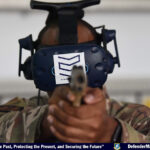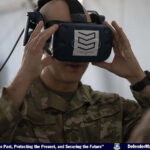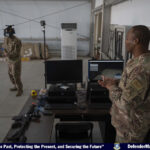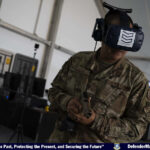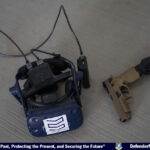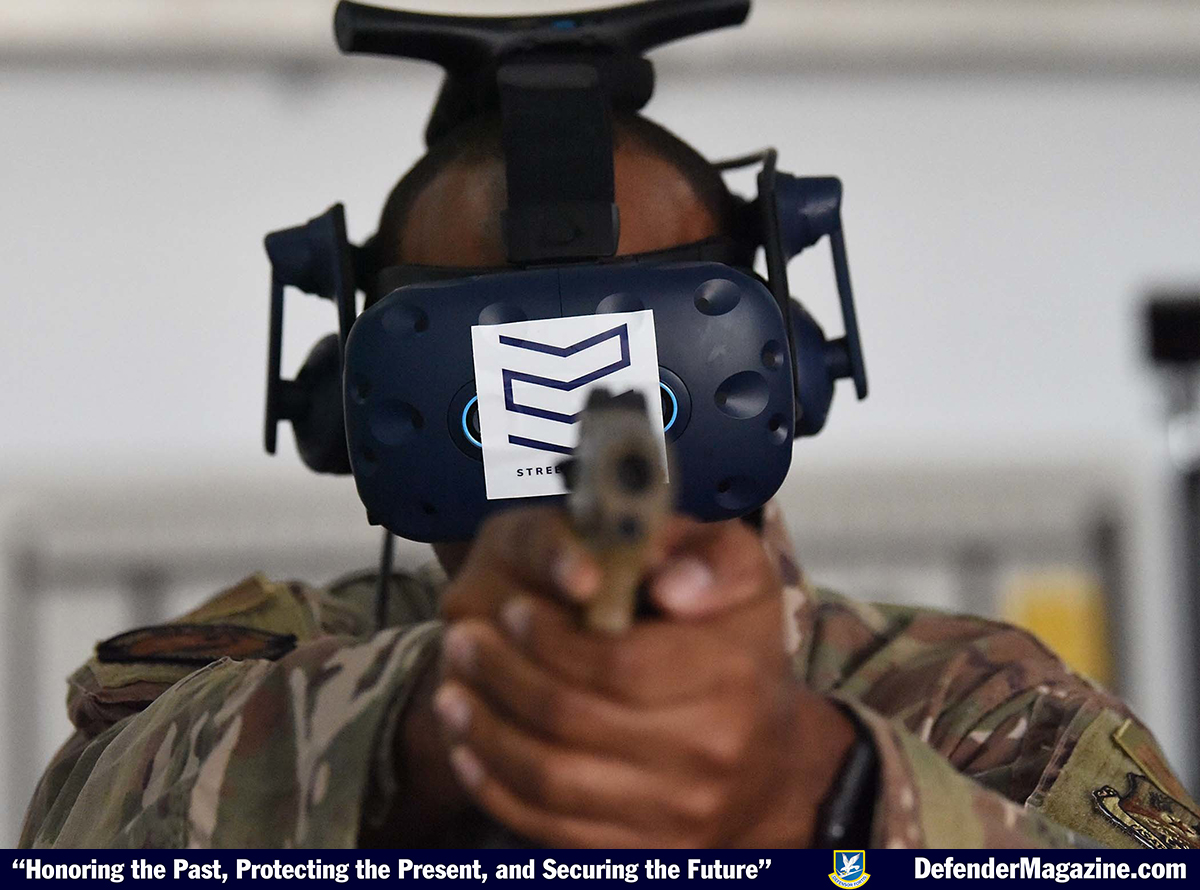AL DHAFRA AIR BASE, United Arab Emirates — The 380th Expeditionary Security Forces Squadron became the first in the U.S. Central Command area of responsibility to receive a virtual reality emergency response and shooting simulator last month.
The VR simulator enhances defenders’ ability to perform their job safely and effectively. The system was adopted to provide simulated experience of common scenarios encountered by ESFS personnel. With just a headset and a simulated M-18 pistol, this system can generate different modules that test the skills of the individual using it.
“You can load up numerous modules that have realistic situations,” said Capt. Tyler Delaney, 380th ESFS operations officer. “You can get a call to respond to a domestic violence incident or even be notified of a potential active shooter. This system provides the person that has the headset a little bit of stimulus instead of just viewing. With the simulated firearm, you can determine if force is necessary or not. If you pull the trigger an action will happen and the VR will notify you if it was a reasonable action or not.”
During the VR sessions, a trained Security Forces specialist analyzes the progress from monitors that display what the VR user is seeing in real time. Master Sgt. Kenneth Greene, 380th ESFS NCO in charge of training, has been leading the system as one of the main VR monitors.
“We look at how they react to the situation itself,” said Greene. “So depending on the scenario, we have complete control on what they’re doing. If they miss a mark we can keep them in that loop until they complete it successfully.”
The 380th ESFS is looking to include this system as a mandatory training for incoming members.
“Eventually what we’d like to do is build it into our unit training plan so every defender that comes through here will always have the opportunity to come sharpen their skills,” said Delaney. “It will make it easier for them to remember proper responses during any situation.”
Alongside the VR simulator, the 380th ESFS uses a simulated weapons firing system that connects to a smartphone application and allows the user to track speed and accuracy of simulated gunfire. Scoring the techniques out of one hundred, it measures firearm fundamentals such as drawing from the holster, trigger pull and steadiness of the weapon.
Technology has become a bigger and bigger part of daily life in today’s Air Force. The VR and simulated weapons firing systems provide Airmen with more opportunities to perfect their job skills, ultimately resulting in higher efficiency in any situation.
“It’s really important for us to run through all these different scenarios because a lot of our skills are perishable,” said Delaney. “If you aren’t developing that muscle memory, you’re not really going to be prepared when it actually happens. The first time you respond on scene to a potential incident, that shouldn’t be the first time you rehearse it in your head. We want to build up our Airmen’s confidence and help them continue to build up their skills and sustain all capabilities.”
